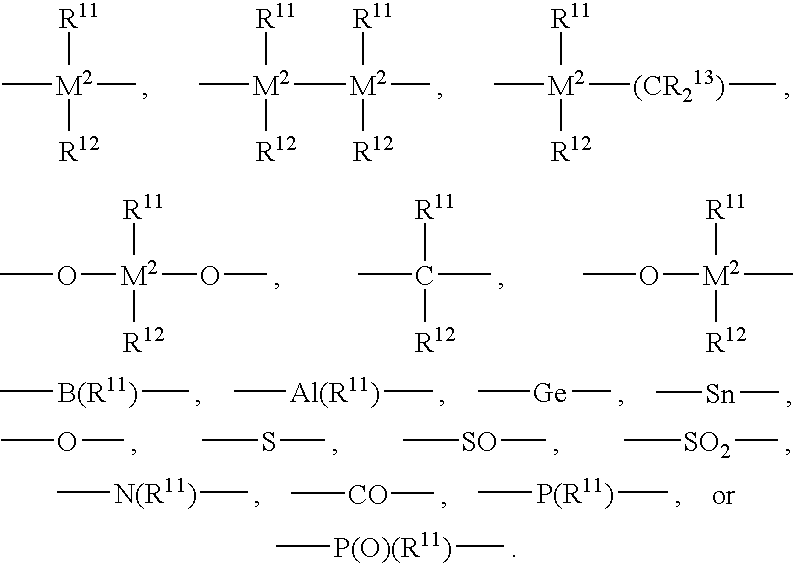Polymerization process with mixed catalyst compositions
a technology of catalyst composition and polymerization process, which is applied in the direction of catalyst activation/preparation, physical/chemical process catalysts, chemical/physical processes, etc., can solve the problems of inability to make inability to select the other polymer component(s), and cumbersome steps, so as to achieve selective activation and effectively tailor-made
- Summary
- Abstract
- Description
- Claims
- Application Information
AI Technical Summary
Benefits of technology
Problems solved by technology
Method used
Image
Examples
examples
1. Preparation of Supported Catalyst (Method 1)
[0155]In a nitrogen purged glove box, 394 g of Davison 952 silica (1.55 cc / g pore volume; dried at 600° C. for at least 1 to 10 hours) is weighed into a 3-neck, 4-liter reactor equipped with an overhead stirrer. Two liters of dry toluene are added, and the mixture is vigorously stirred. 27.6 ml of N,N-diethyl aniline is added via syringe, followed by the addition of 86.0 g of solid tris(perfluorophenyl)boron. This mixture is allowed to stir for one hour. Then 5.99 g of dimethylsilylbis(2-methyl-4-phenylindenyl) zirconium dimethyl is added, and this mixture is allowed to stir two hours longer. The stirring is stopped, and the solids are allowed to settle. The supernatant liquid is decanted, and the solids are vacuum dried at room temperature overnight. The yield of supported catalyst should be approximately 423 g, with a loading of approximately 0.02 mmol of transition metal per gram of finished catalyst.
2. Preparation of the Supported C...
PUM
| Property | Measurement | Unit |
|---|---|---|
| particle size | aaaaa | aaaaa |
| particle size | aaaaa | aaaaa |
| particle size | aaaaa | aaaaa |
Abstract
Description
Claims
Application Information
 Login to View More
Login to View More - R&D
- Intellectual Property
- Life Sciences
- Materials
- Tech Scout
- Unparalleled Data Quality
- Higher Quality Content
- 60% Fewer Hallucinations
Browse by: Latest US Patents, China's latest patents, Technical Efficacy Thesaurus, Application Domain, Technology Topic, Popular Technical Reports.
© 2025 PatSnap. All rights reserved.Legal|Privacy policy|Modern Slavery Act Transparency Statement|Sitemap|About US| Contact US: help@patsnap.com



